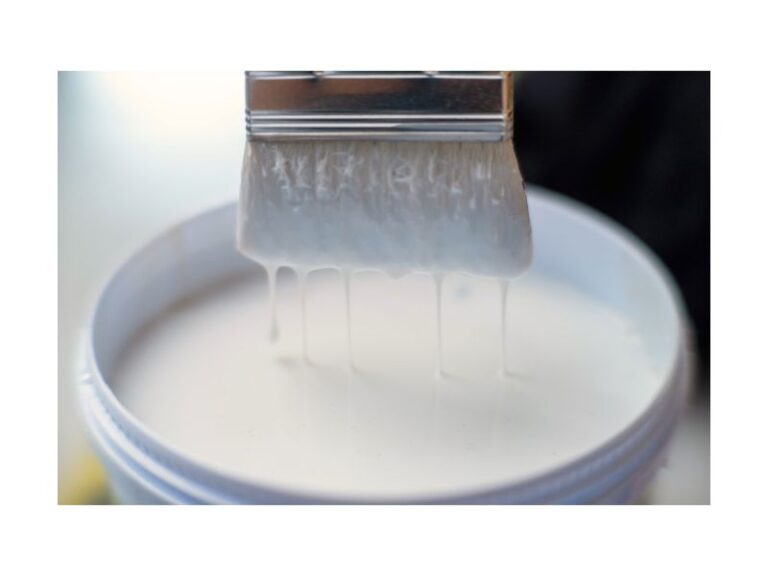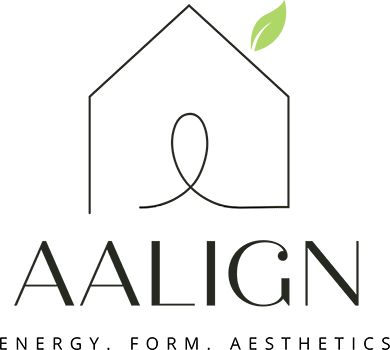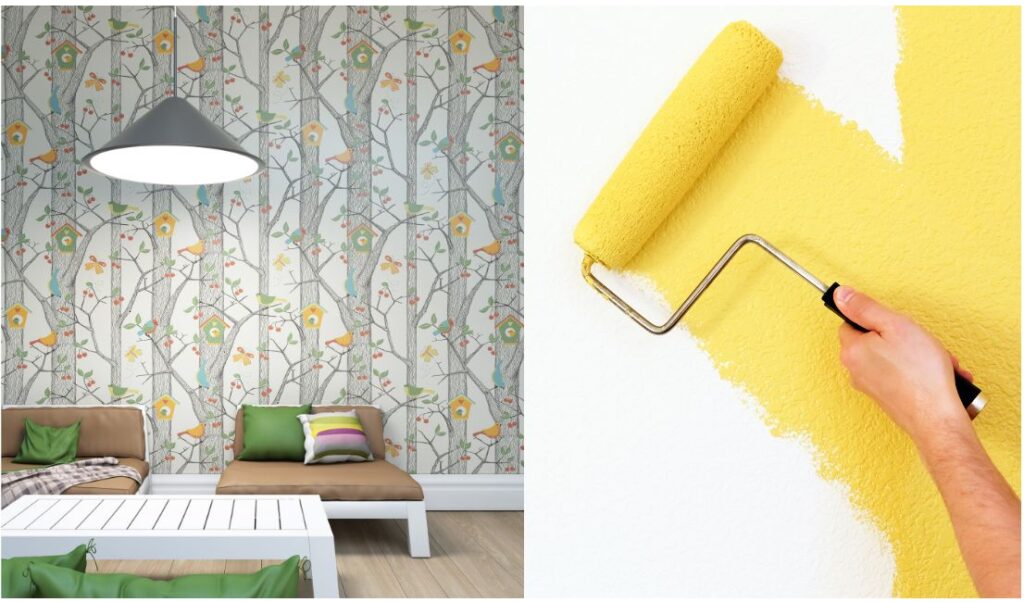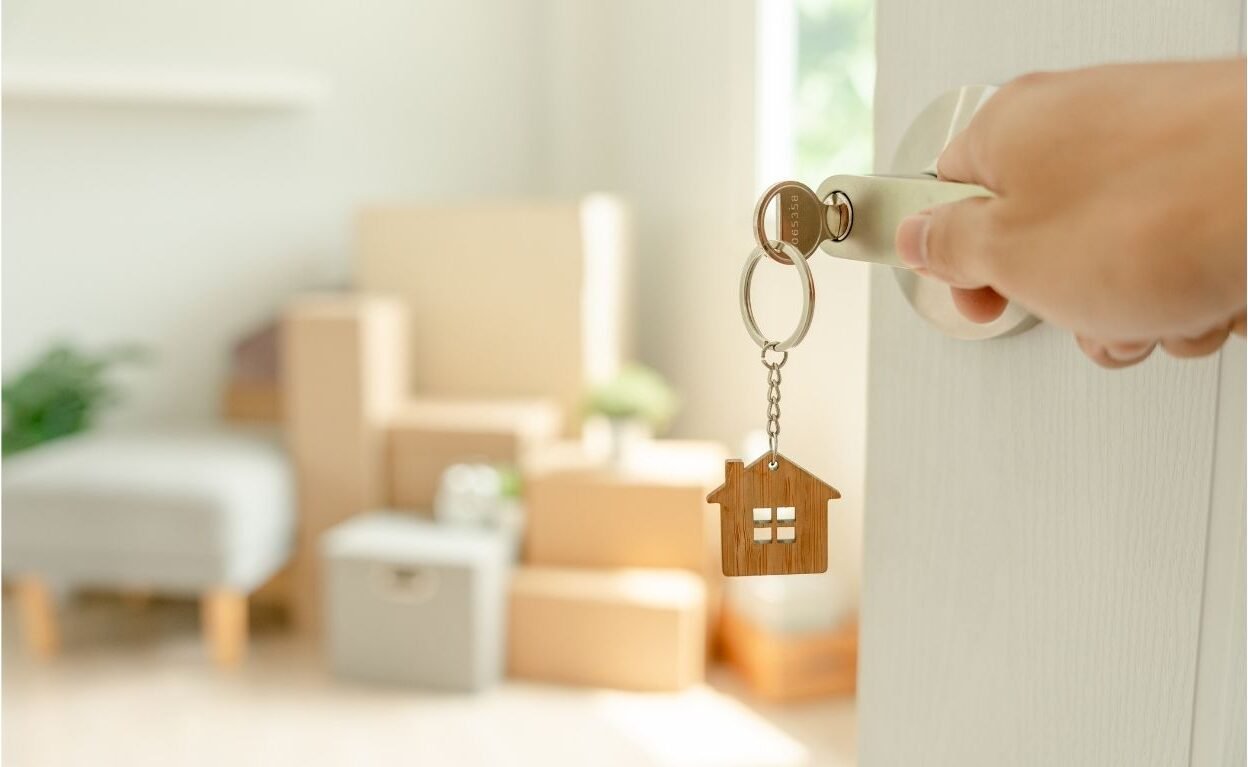Creating stylish, inviting, and functional spaces shouldn’t come at the expense of our health or the environment. In selecting low or non-toxic paints, it’s essential to choose materials that are low in toxins or chemical-free. Choosing wisely not only improves the integrity of our interiors but also creates a healthier living environment for us and future generations.
Each brand we share is carefully selected to support your journey toward healthier living spaces. Through our affiliate links, you can easily access products, allowing us to earn a small commission at no extra cost to you.
(For a curated selection of eco-conscious brands offering cleaner & safer products, we invite you to explore our shop page.)
How Can Paint Be Harmful To Your Health?
Ever smelled fresh paint? It’s actually a mixture of chemicals called volatile organic compounds (VOCs), which are harmful if inhaled.
Despite paint’s importance for aesthetics and protection, there are significant health risks associated with chemicals such as VOCs, formaldehyde, heavy metals, and other toxic additives.
These substances can off-gas harmful fumes into your indoor environment, thereby leading to short-term issues like headaches, dizziness, and respiratory irritation, as well as long-term health effects including liver, kidney, and nervous system damage, and an increased risk of cancer.
So, while a fresh coat of paint can give your space a facelift, it’s worthwhile to consider the possible health risks.

Types of Paint On The Market
Water-Based Bases:
- Acrylic: A quick-drying paint that is versatile and easy to clean, suitable for various surfaces.
- Latex: A type of water-based paint, commonly used for interior and exterior walls due to its ease of use and durability.
- Alkyd (Water-Based): A water-based formulation that mimics the durability of oil-based paints but with easier cleanup.
- Acrylic: A quick-drying paint that is versatile and easy to clean, suitable for various surfaces.
Oil-Based Bases:
- Linseed Oil: A traditional oil base that provides a glossy finish and a longer drying time.
- Synthetic Oils: Modern formulations that offer faster drying times and reduced odor compared to traditional oil-based paints.
- Linseed Oil: A traditional oil base that provides a glossy finish and a longer drying time.

Health Risks associated with Chemicals present in Paint
- Volatile Organic Compounds (VOCs): Benzene, toluene, xylene, and formaldehyde are common VOCs found in paints.
- Biocides: Biocides in paints, like Triclosan or oregano oil, are used to prevent mold and mildew but can cause skin irritation, respiratory issues, or allergic reactions.
- Formaldehyde: Used as a preservative or binder in some paint formulations. Formaldehyde irritates eyes, skin, and lungs, contribute to respiratory problems and even cancer risks with long-term exposure.
- Phthalates: Phthalates, used as plasticizers in paint additives, can disrupt endocrine function and have been linked to reproductive issues, developmental problems in children, and increased risk of certain cancers.
- Isocyanates: Found in certain polyurethane paints and coatings. Known to cause respiratory issues and skin irritation.
What are the short-term and long-term effects of these chemicals?
- Short-term effects of chemicals in paint can include headaches, dizziness, irritation of the eyes, nose, and throat, respiratory issues, and nausea.
- Long-term effects: Potential damage to the liver, kidneys, nervous system, and increased cancer risk.
Which chemicals specifically can have long-Term Effects or off-gas for years?
- VOCs
- Formaldehyde
- Phthalates
- Heavy metals
- Synthetic dyes and pigments
- Isocyanates

Low- or Non-Toxic Paints and Safer Alternatives
In response to growing concerns about indoor air quality, the paint industry has developed a range of low-toxic and sustainable paints. Here are some common types:
Non-Toxic Paints
Milk Paint: Contains milk protein, casein, lime, and natural pigments; free from VOCs and safe for indoor use.
Clay Paint: Offers a natural, breathable finish with low VOCs.
Mineral Paint: Utilizes natural minerals for durability and low toxicity.
Limewash: An antimicrobial paint made from slaked lime, known for its breathability.
Low Toxicity Paints
Water Based Low-VOC Latex Paints: Widely available, offering durability and low emissions.
Water Based Zero-VOC Latex Paints: Contain minimal or no volatile organic compounds.
Plant-Based Paints: Employ natural oils and waxes as binders, minimizing VOCs.
Innovative Paint Options
Silicate Paints: Durable, breathable, and mold-resistant paints made from mineral silicates.
Enzyme-Based Paints: Natural enzyme-based paints that are low-toxic and biodegradable.
Recycled Paints: Repurposed paint that reduces waste and impacts the environment.

Key Certifications and Labels to Look For Paint
For VOC Content:
- Look for wall coverings and paints labeled as low-VOC or VOC-free to minimize exposure to harmful compounds.
For Third-Party Certifications:
- GREENGUARD GOLD: Indicates low chemical emissions and better indoor air quality.
- Cradle to Cradle Certified: Ensures products are environmentally safe and sustainably produced.
- LEED-Certified: Confirms that products meet high standards for sustainability and low environmental impact.
These certifications and labels help ensure that products meet strict criteria for reduced chemical emissions and eco-friendliness.
Brands that offer Low or non-Toxic Paint & Finishes:
Listed below are some reputable brands that are known for their commitment to health and sustainability:
ECOS Paints:
Known for its zero-VOC, non-toxic paints with a wide range of colors and finishes. Get 10% off code: AALIGN10
Clare Paint:
Offers premium, zero-VOC interior paints with a focus on sustainability and health.
Real Milk Paint:
A traditional, non-toxic paint made from milk protein, lime, and natural pigments.
Bioshield:
Offers eco-friendly paints with low VOCs and antimicrobial properties.
Rubio Monocoat:
Known for its natural oil-based finishes that are non-toxic and durable.
Eco Spec®
Eco Spec is a zero-VOC, zero-emission paint ideal for eco-conscious interiors. It is certified asthma & allergy friendly®, making it suitable for those with respiratory sensitivities. Offered by Benjamin Moore.
EcoSelect®
Sherwin-Williams EcoSelect® is a low-VOC, eco-conscious paint that provides a durable, washable finish, making it ideal for spaces that prioritize indoor air quality without compromising on performance.
ProMar 200
Offers zero-VOC durability and easy maintenance, making it well-suited for both residential and commercial spaces needing high performance and minimal environmental impact.
SuperPaint
SuperPaint® goes beyond paint by helping reduce VOCs and odors in the air. Its air purifying technology creates a cleaner environment in high-traffic areas while providing a tough, long-lasting finish.
Try Before You Commit!
Samplize: Makes Choosing Paint Easy & Mess-Free!
For ultimate convenience and the chance to test out colors without the mess, Samplize is a game-changer!
Their peel-and-stick paint samples, made with real paint, let you try colors directly on your walls—no hassle, no mess.
Plus, these samples are reusable and repositionable, offering an accurate look at color and finish. Perfect for making a confident decision on the ideal shade for your space. Get 10% off code: AALIGN10
Brands: Samplize offers samples from popular paint brands, including:
- Sherwin-Williams
- Benjamin Moore
- Farrow & Ball
- PPG
Pricing: Each sample costs around $5.95 to $6.50, depending on promotions and shipping.





